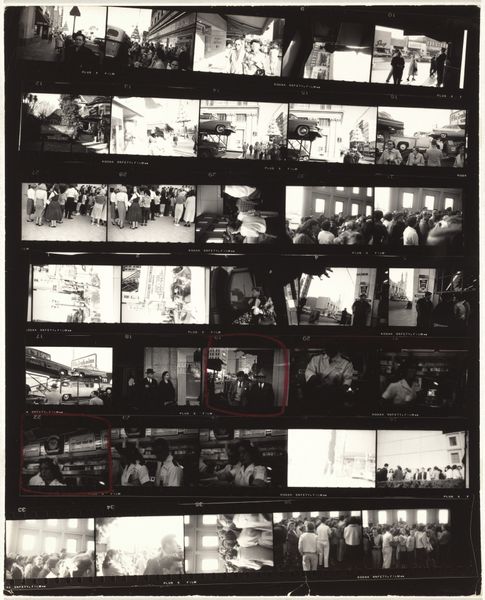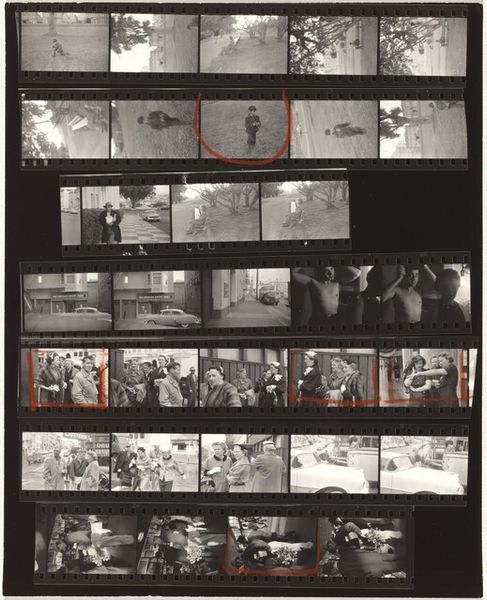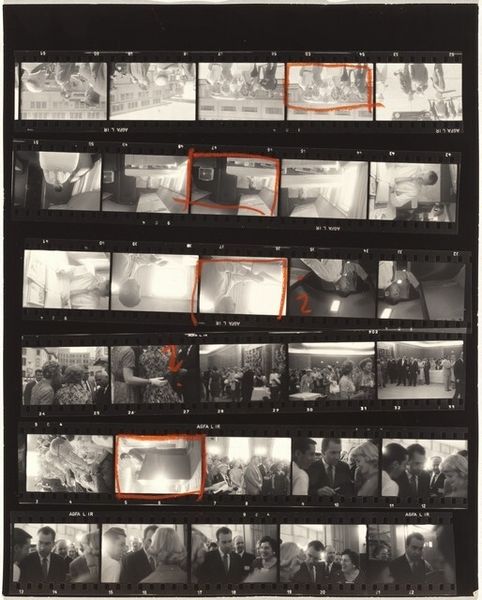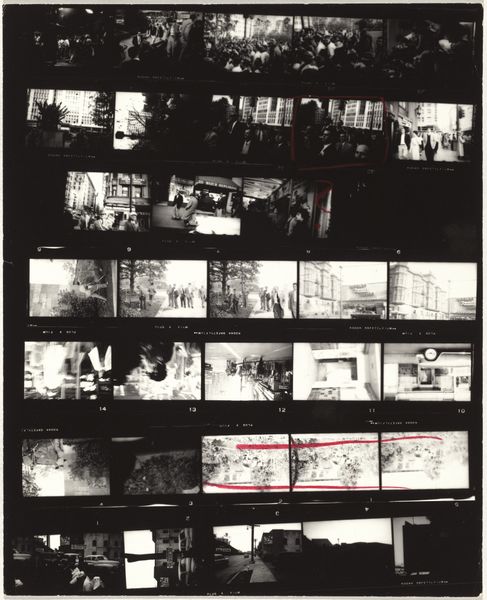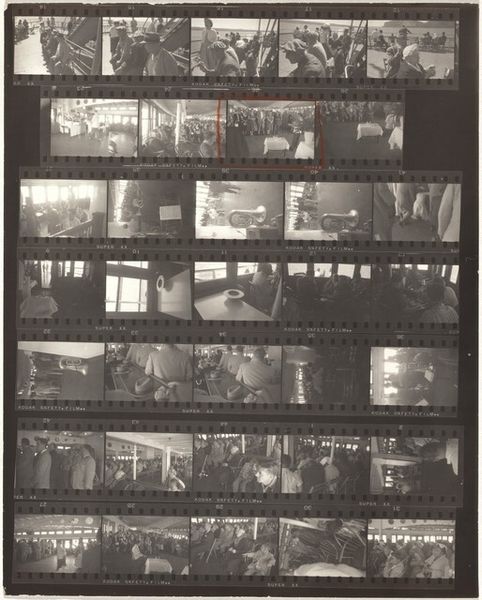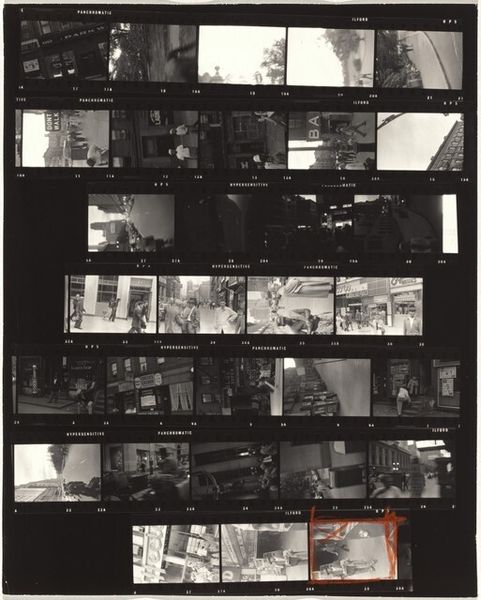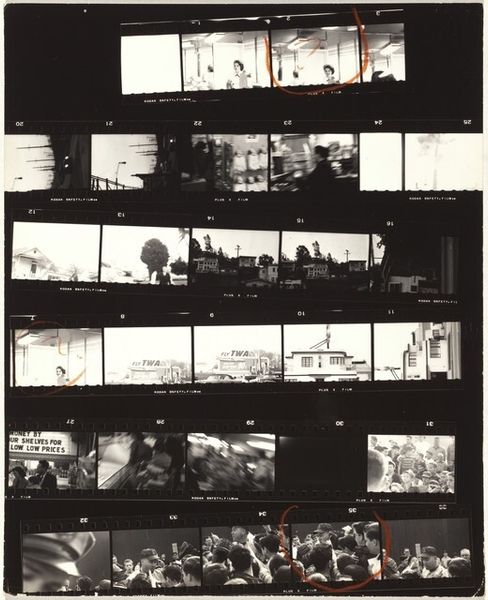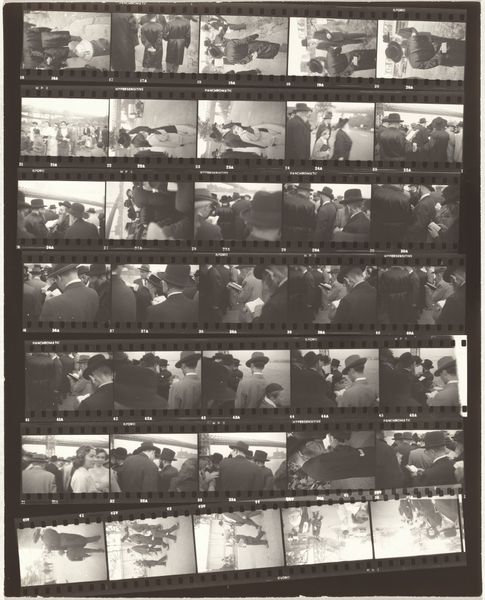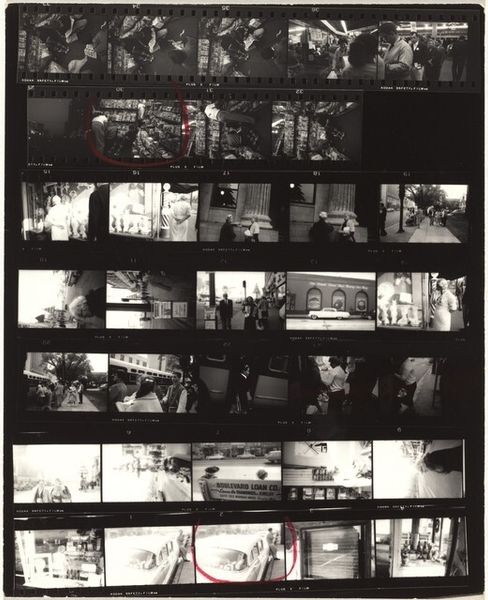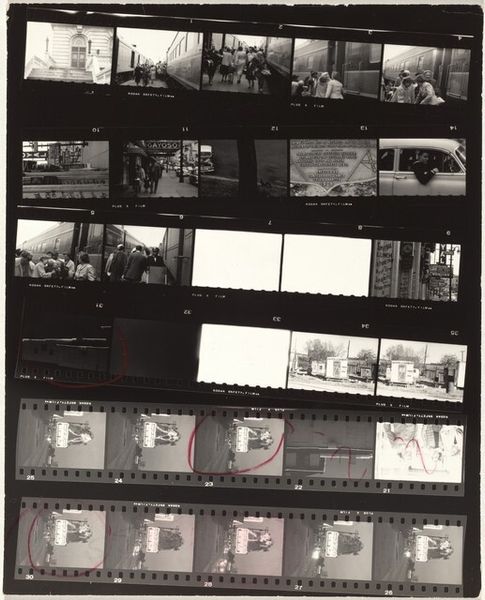
photography
#
street-photography
#
photography
#
pop-art
#
modernism
#
realism
Dimensions: overall: 25.2 x 20.2 cm (9 15/16 x 7 15/16 in.)
Copyright: National Gallery of Art: CC0 1.0
Curator: Robert Frank's contact sheet, "From the bus 76B," made in 1958 presents us with a constellation of moments, captured on film. What’s your immediate take on this collection? Editor: Gritty, immediate. It's a visual poem about the relentless rhythm of the city. I see crowds, storefronts, the constant flux of movement. There’s a palpable tension, even a certain melancholy in these frames. Curator: As a materialist, the very presentation speaks volumes. This isn’t about one perfectly staged image but a chain of exposures, raw and unedited. Frank is presenting us with his process, making us aware of the tools, the very celluloid on which the images are born. And look at the annotations along the edges, where film stock types are listed - this foregrounds his material choices as well as an attentiveness to documenting them. Editor: The repeated appearance of particular motifs– a movie theater entrance, signs, the faces in the crowd – act as visual echoes, accumulating layers of meaning. They give this series of images a narrative cohesiveness. And of course, we cannot overlook Frank's obsession with signage and lettering; these communicate both practical direction but are also symbolic markers of American optimism and consumerism. Curator: Indeed, but let's not forget the 'how'. These shots would have been produced quickly, possibly discreetly, perhaps reflecting his own status as an outsider looking in. The graininess isn't a flaw but evidence of available light, a fast film. He had a specific film stock, a specific camera, a certain position to consider... this wasn't chance. And it makes these scenes more about labor than perhaps other forms of image making do. Editor: Absolutely. Each sign, each face, contributes to the overall story. Do you think the very concept of a "bus route" contributes something here too? It’s linear, following one fixed trajectory but also one of change - new faces entering and exiting, like moments in our memories. It suggests connection. It makes me consider temporality in images in an altogether new way. Curator: In essence, this sheet is more than the sum of its parts; it's a testimony to photographic production, and also speaks to social conditions of the time, in particular the culture industry and city planning as reflected in modes of transport. Editor: And that, for me, only enhances the visual weight that certain figures, settings, and symbols possess. Thanks for highlighting this connection.
Comments
No comments
Be the first to comment and join the conversation on the ultimate creative platform.

